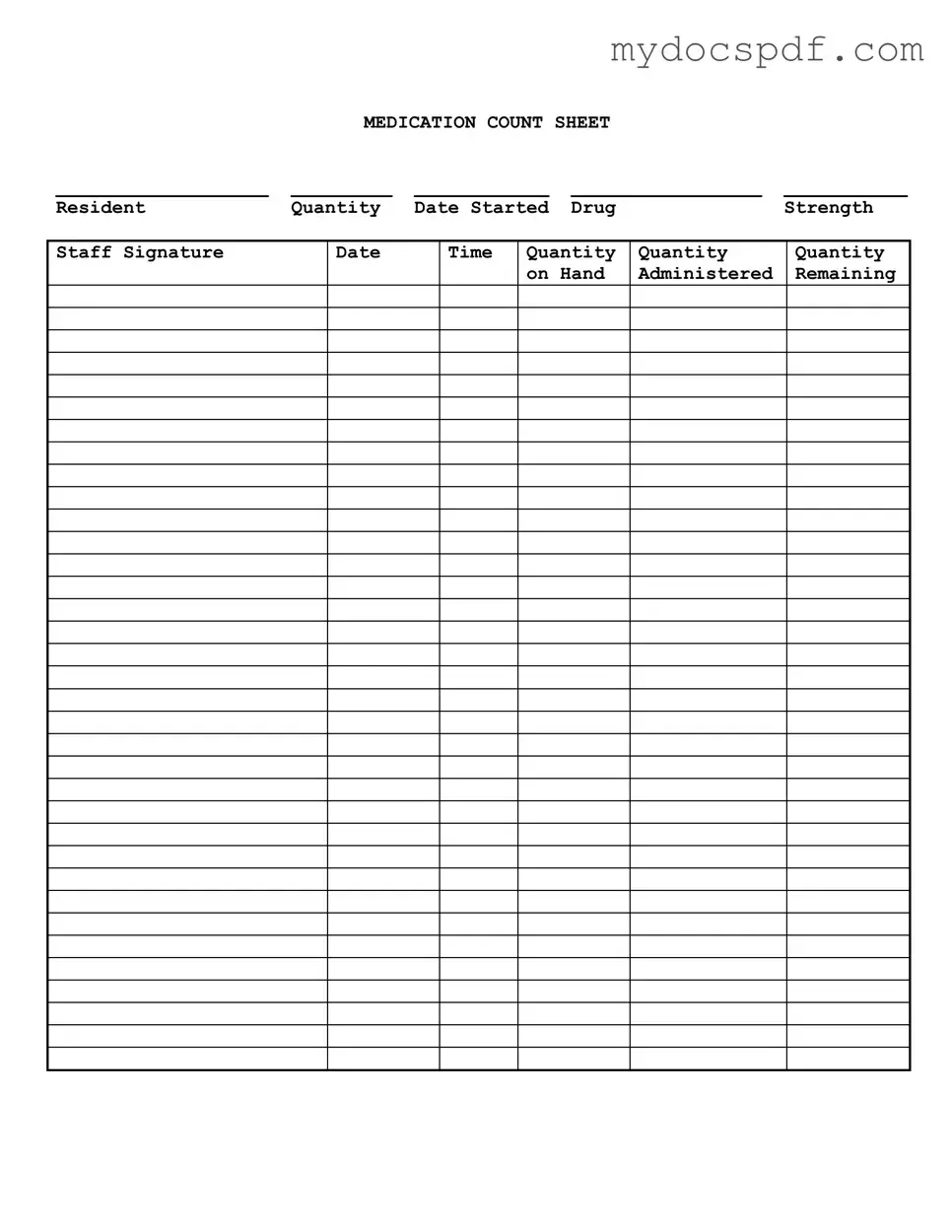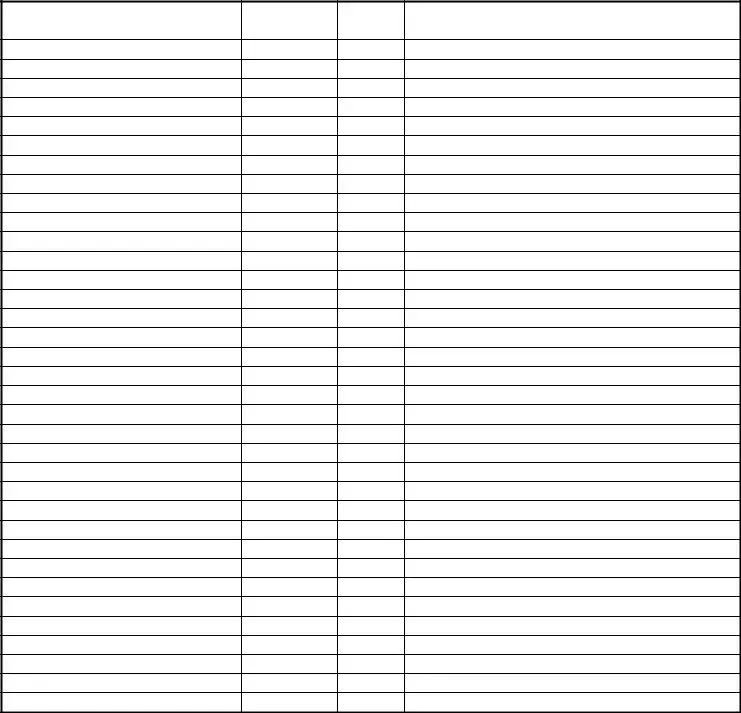Get Medication Count Sheet Form in PDF
The Medication Count Sheet is a vital document used in healthcare settings to track the administration and inventory of medications for residents. It includes essential details such as the drug name, strength, quantity administered, and the remaining amount on hand. Properly maintaining this form ensures accountability and safety in medication management.
Access Editor Here

